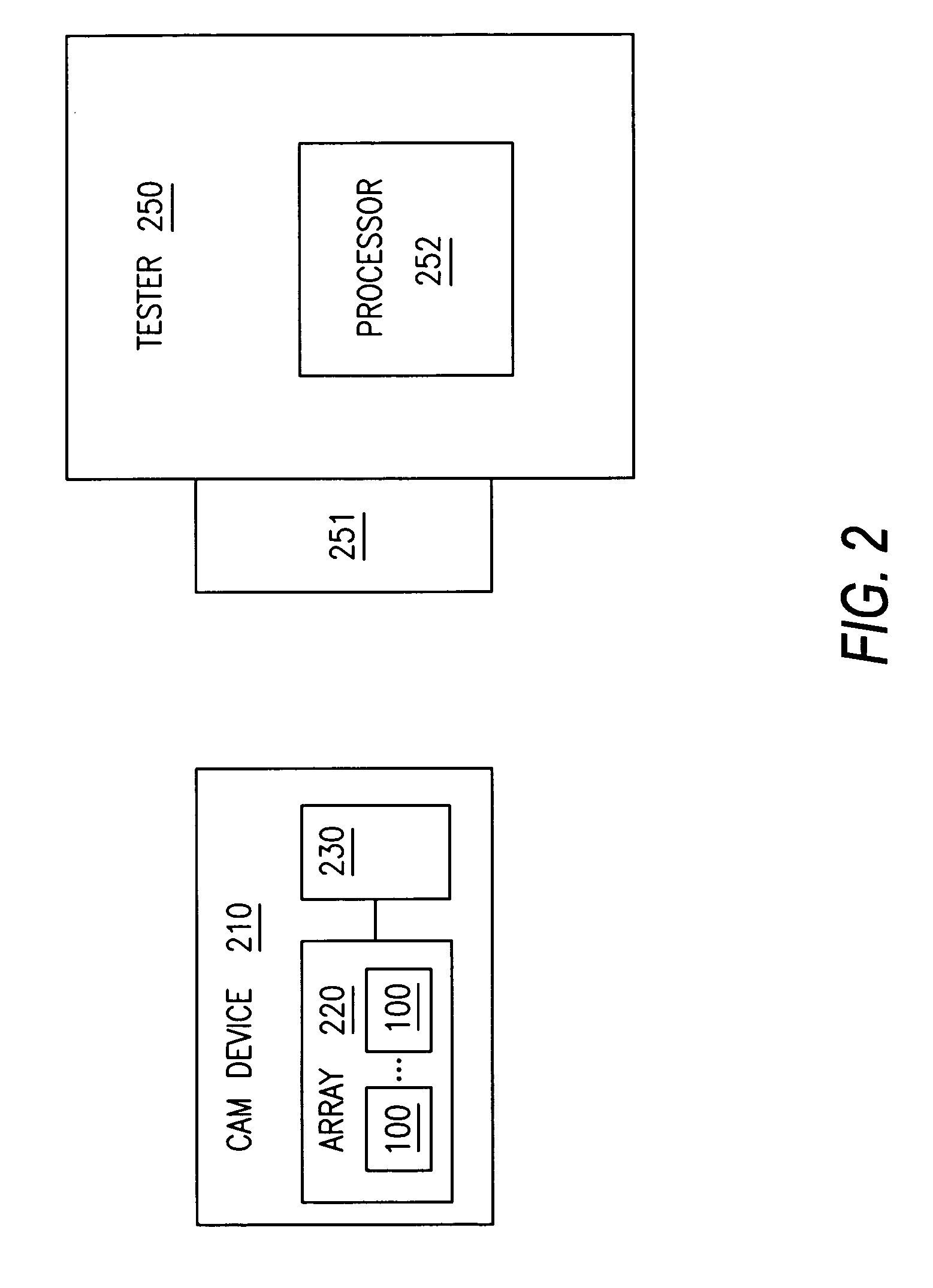Testing CMOS CAM with redundancy
a technology of cmos cam and redundancy, applied in the field of cmos cam ternary content addressable memory (tcam) devices, can solve the problems of time-consuming and costly testing, data corruption by memory device use,
- Summary
- Abstract
- Description
- Claims
- Application Information
AI Technical Summary
Benefits of technology
Problems solved by technology
Method used
Image
Examples
Embodiment Construction
[0021]Now referring to the drawings, where like reference numerals designate like elements, there is shown in FIG. 2 a CAM device 210 and a tester 250. The CAM device 210 includes at least one memory array 220. Each array 220 has a plurality of CAM cells 100 (FIG. 1). The CAM device 210 also includes a control circuit 230 for operating the CAM device 210 and for interfacing with external devices. The tester 250 includes an interface 251 for communicating with the CAM device 210. The tester 250 further includes a processor 252, which can execute a series of tests on the CAM device 210 as described below with reference to FIGS. 3–5, 6A, and 6B. The tester 250 tests the device 210 by placing the device 210 into a test mode and then executing the below described procedure. The device 210 may be placed into test mode in a variety of ways which are well known, such as asserting a signal on a test mode enable pin (such pins are typically made non accessible after the device 210 has been te...
PUM
 Login to View More
Login to View More Abstract
Description
Claims
Application Information
 Login to View More
Login to View More - R&D
- Intellectual Property
- Life Sciences
- Materials
- Tech Scout
- Unparalleled Data Quality
- Higher Quality Content
- 60% Fewer Hallucinations
Browse by: Latest US Patents, China's latest patents, Technical Efficacy Thesaurus, Application Domain, Technology Topic, Popular Technical Reports.
© 2025 PatSnap. All rights reserved.Legal|Privacy policy|Modern Slavery Act Transparency Statement|Sitemap|About US| Contact US: help@patsnap.com



